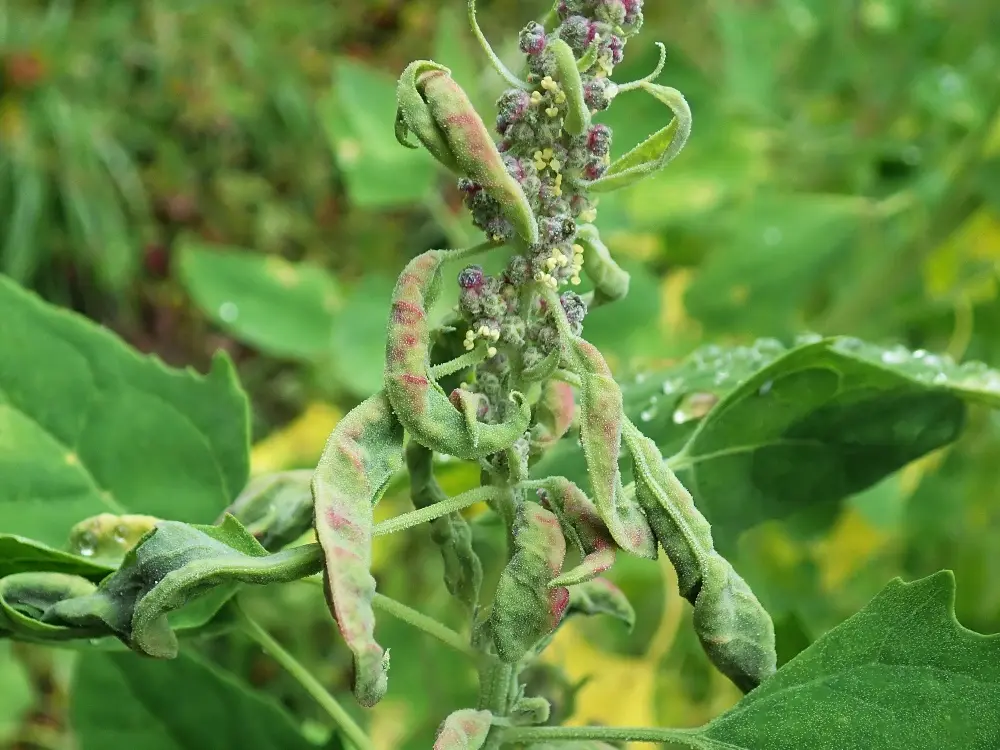- Its recent report in Ecuador (2023) and now in Colombia, at altitudes between 1,777 and 2,600 meters above sea level in Totoró and Bolívar, Cauca, confirms its presence in South America.
- It may spread to other quinoa-producing countries in the region, such as Argentina, Bolivia, Chile, and Peru.
- The new aphid causes leaf malformations and significant damage to the plants.
- It has natural enemies, but further studies are needed to confirm the predatory role of certain insects.
Palmira, Valle del Cauca. July 10, 2025. For the first time, the quinoa aphid (Hayhurstia atriplicis) has been officially reported in Colombia, specifically in quinoa crops (Chenopodium quinoa Willd.) in the municipalities of Totoró and Bolívar, in the department of Cauca. This significant finding is the result of a thorough faunistic study conducted by the Colombian Agricultural Research Corporation, AGROSAVIA.
Impact on Quinoa and Aphid Characteristics
Hayhurstia atriplicis causes characteristic leaf malformations in quinoa, known as pseudo-galls, and can inflict substantial damage on the plants. It is believed that the aphid’s saliva contains toxins, and by feeding on young leaves, it induces the formation of these structures.
How to Identify Hayhurstia atriplicis
Winged females have a dark head and thorax with a light brown abdomen. Wingless adult forms are dark green and covered in a white waxy powder. Their small siphunculi (tubular structures) are noticeably shorter than their cauda (tail-like structure).
Biology and Natural Allies
This aphid completes its life cycle on a single host plant and reproduces sexually, as it is a monoecious (hermaphroditic) and holocyclic species (alternating between sexual and parthenogenetic generations). Although oviposition usually occurs in October in other regions, in Colombia, the species is multivoltine, producing multiple generations throughout the year. So far, only females have been observed in this study.
Fortunately, this aphid has a variety of natural enemies:
“Inside the pseudo-galls, thrips of the genus Frankliniella were found, suggesting they feed on the aphid. Parasitoid wasps (evidenced by ‘mummies’ of aphids) and syrphid larvae were also found inside the pseudo-galls, along with unidentified earwigs. On infested plants, invasive lady beetles such as Harmonia axyridis and Cheilomenes sexmaculata were observed, as well as native species like Coleomegilla maculata, Cycloneda emarginata, and Neda sp.,” confirmed Dr. Demian Takumasa Kondo, Ph.D. researcher at AGROSAVIA’s Palmira Research Center.
Other predators such as green and brown lacewings were also recorded. However, more research is needed to confirm the predatory role of these insects on the aphid.
Geographic Distribution and Future Projections
Previously, Hayhurstia atriplicis was known in Europe, Asia, Africa, and North and Central America. Its recent report in Ecuador (2023) and now in Colombia, at altitudes between 1,777 and 2,600 meters above sea level, confirms its presence in South America. It is likely that this aphid will spread to other quinoa-producing countries in the region, such as Argentina, Bolivia, Chile, and Peru.
Challenges and Management Strategies
Although Hayhurstia atriplicis has numerous natural enemies, the presence of damage in pesticide-treated crops suggests that these beneficial organisms are highly sensitive to chemicals. Aphids, protected within pseudo-galls, are less affected by contact pesticides. Therefore, future studies confirming the predatory action of coccinellids and lacewings, and identifying natural enemies at the species or genus level, are crucial.
This work was published in the international journal Insecta Mundi. Reference:
Kondo, T., Rosero, R., Gaviria, J. (2024). First record of the invasive chenopodium aphid, Hayhurstia atriplicis (Linnaeus, 1761) (Hemiptera: Aphididae), in Colombia. Insecta Mundi, 1048, 1–7.
- More information here:
- Claudia Narváez Marmolejo
- Communications, Identity and Corporate Relations Professional
- Research Center Palmira - Popayán
- Communications, Identity and Corporate Relations Advisory Office
- cnarvaez@agrosavia.co
- AGROSAVIA





